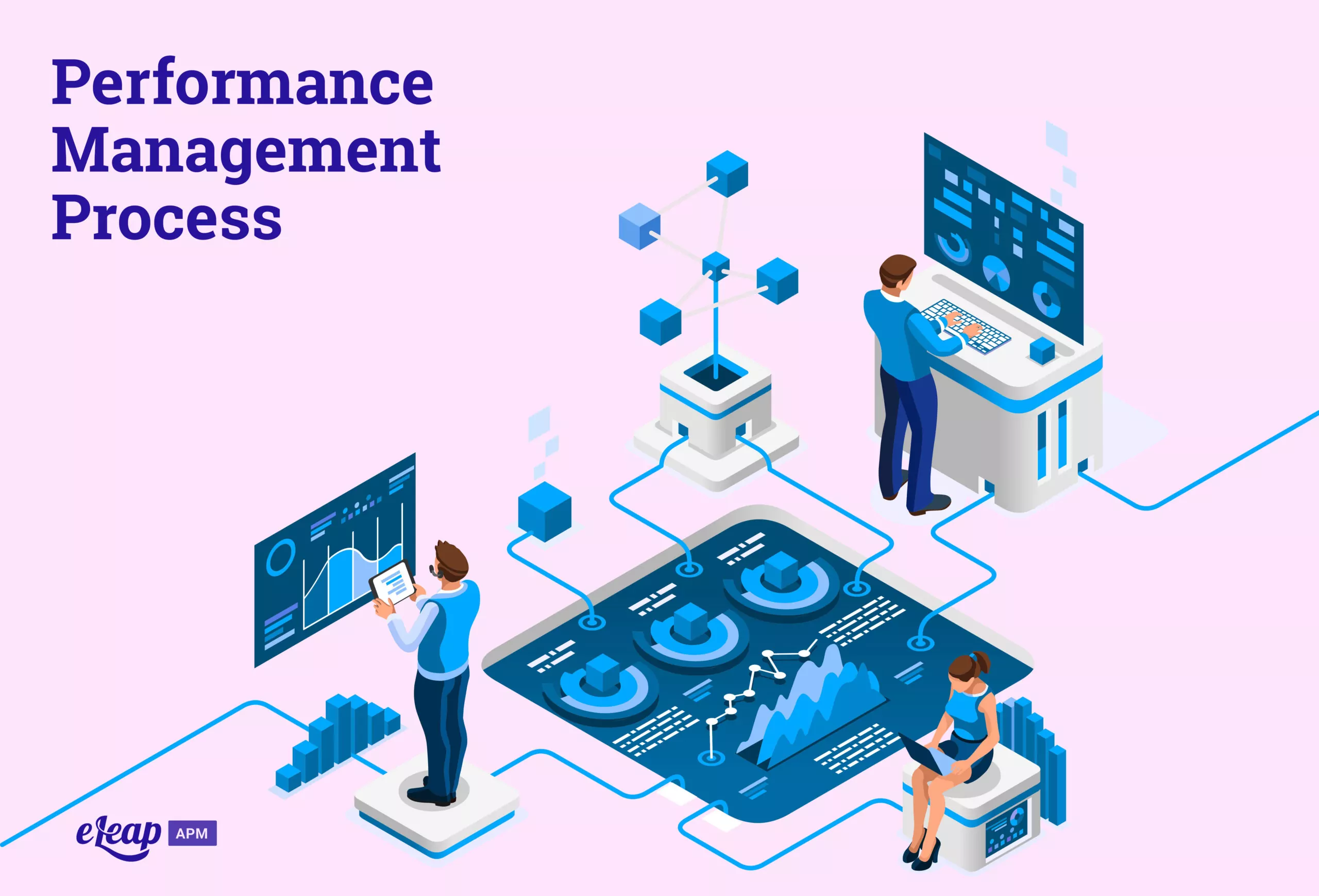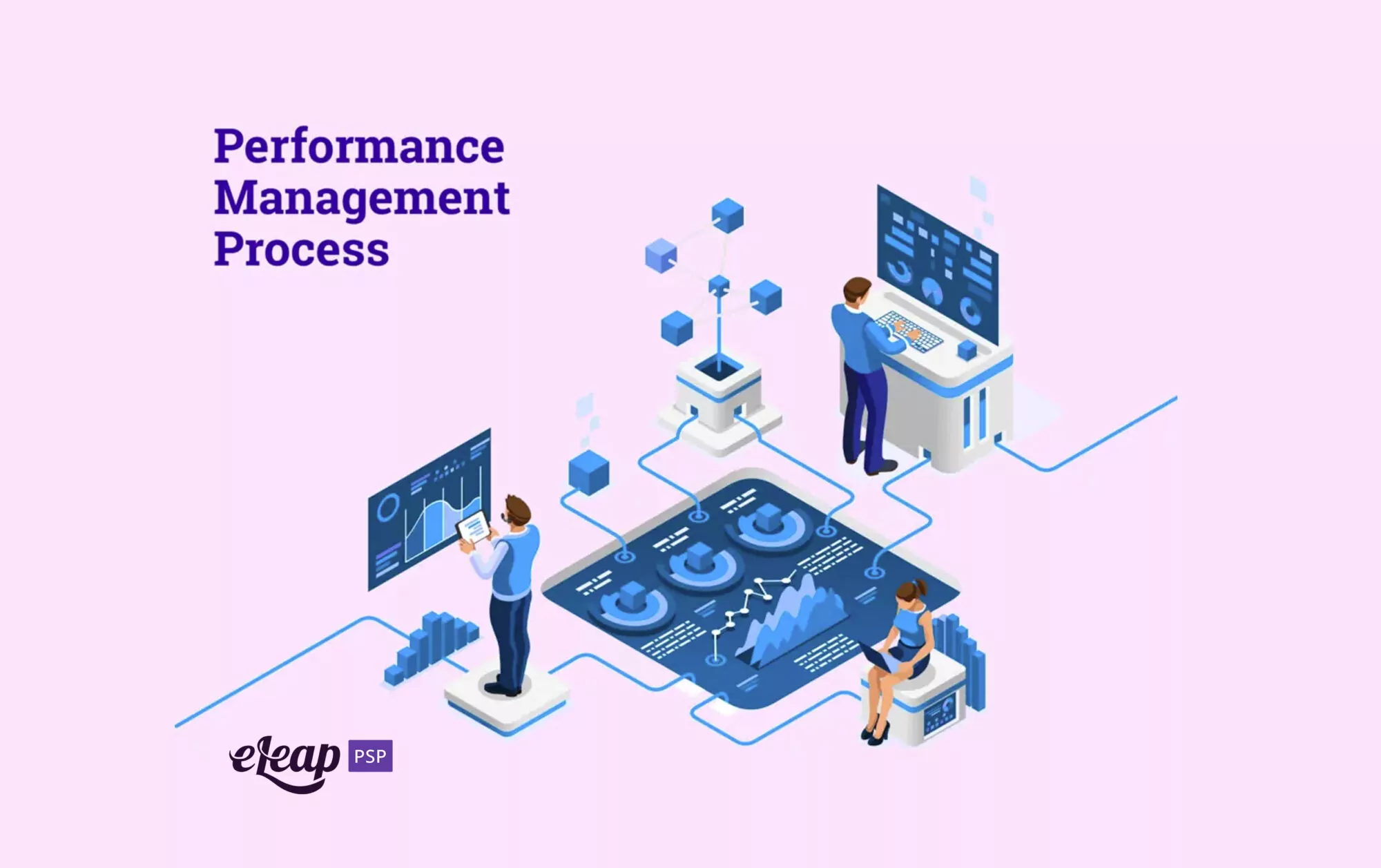Performance Management Process
Understand the Steps Behind an HR Powerhouse

In the world of human resources, performance management is a term you’ll commonly hear brought up. This is essentially an umbrella term for all the processes that guarantee a business’s employees are connected to their goals and objectives. Understanding how performance management works is a crucial step in maximizing how much of a benefit it has for your business. We’ll go through the process of performance management one step at a time, so you leave with a deeper understanding of this concept that’s so fundamental to human resources. Download the ebook “The Skeptics Guide to Performance Management“ and get started on improving your performance management process.

A Two-Step Process
At the most basic level, performance management is a two-step process. The first step is to assess your employees’ performance. This is done by regularly setting expectations and analyzing how well employees fulfill those expectations. The second step in performance management is to provide employees with feedback to help them develop better work habits and reinforce their strengths.
Effectively implementing performance management helps both employees and businesses as a whole by clearly setting employees’ responsibilities and what the company expects of them. It boosts team and individual productivity by connecting all parts of a business, and it helps take the sting out of feedback by making it an essential and regular part of the job. Managers and employees build healthier ways of communication, leading to a happier work environment.
What You’ll Need
Performance management makes use of a wide set of tools to get the job done. One of the most common of these tools is an appraisal form. There are a variety of terms used to describe these forms—performance reviews, annual reviews, performance appraisals—but they are all tools to evaluate employee performance. They should gauge employee performance based on a set of goals previously established that relate to the company’s objectives.
Performance reviews cover a wide set of skills that relate to the employee’s job description as well as some core values that affect their performance in a broader sense. Assessments are usually then used to provide feedback and come up with new objectives and expectations for the future. Employees and managers generally develop these career plans collaboratively, which is why we say that performance management helps build stronger, more cooperative employee/employer relationships.
In recent years, though, many companies have found the irregularity of quarterly or annual performance reviews to be lacking. A better approach, they have found, is to provide regular and continuous feedback through automated, digital cloud-based performance management platforms. This software takes the same core idea behind performance management—evaluate performance and provide feedback—and makes it an ongoing process. The benefits are roughly the same but amplified and expedited into a continuous development plan.
What’s More Important: Evaluation or Feedback?
The answer to this question is a little complicated. Without one, you wouldn’t really have the other. Evaluation is crucial to pinpointing where exactly your employees are struggling. From here, you can fix wider issuing cause trouble in your organization. It’s also a great tool for finding an employee’s strengths. Highlighting where employees have succeeded and encouraging them to keep up the good work is an important step in maintaining a productive workforce.
The evaluation process is important for more than just one reason, though. It’s not only because it gauges your business’s performance but also because it leads to feedback and growth. Giving regular and consistent feedback whenever needed is a tool for change. Simply pointing out where your employees have fallen behind isn’t enough to change their performance. If anything, it will leave them feeling defeated and discouraged.
Feedback should be specific, to the point, and clear. Rather than focusing on generalizations, it should be based on examples. When you frame feedback around a specific event, an employee can see how their actions lead to a result, whether that’s positive or negative. From here, you can pivot to a solution or reinforce their strengths. Feedback is about developing new goals that fall in line with the company’s objectives. By setting new, specific expectations, the employee will leave with the knowledge of how to improve.
Consider some of the following points for giving constructive feedback:
- Feedback should be given regularly and as soon as needed
- Encourage, don’t berate
- Give feedback in private, if negative
- Call on examples whenever possible
- Set clear expectations for the future
Following these guidelines will help guarantee that the feedback you provide employees is as effective as possible.
The Importance of Documentation
Documentation is the backbone of any successful company. From accounting to HR, your business needs multiple levels of organized data processing to store information. The same goes for performance management. Because so much of performance management is about tracking employee performance, you need a way to keep that information in a clean, easily accessed location. Documentation protects management and the employee and also makes evaluation a more straightforward process.
Keeping up with this volume of information may seem nearly impossible, but that’s where digital cloud-based performance management platforms have saved the day. Because everything is stored within the cloud, unless it’s deleted, information cannot be lost. Performance is tracked in real-time and can be exported and downloaded to an easy-to-read data report. This means that when it’s time to dole out promotions and raises, management will have exact data and information to back up their decisions.
Conclusion
Understanding how the process of performance management works is a great first step to implementing it into your business. Hopefully, this brief rundown has provided you with the information you need to realize that performance management is one of the best ways to boost productivity, not just temporarily but into the future as well. By evaluating employees’ performance and providing them with the feedback they need to grow, you’re investing in your business’s growth. For more information on cloud-based performance management software, we encourage you to contact us, and we’ll get you set up with the right platform to suit your needs.